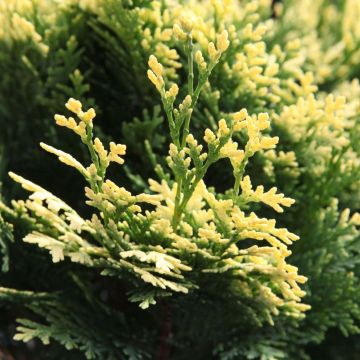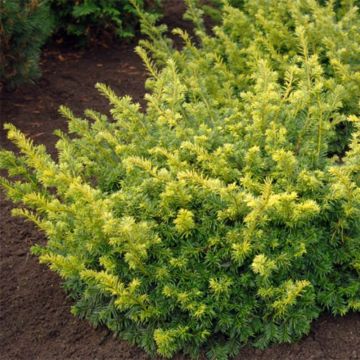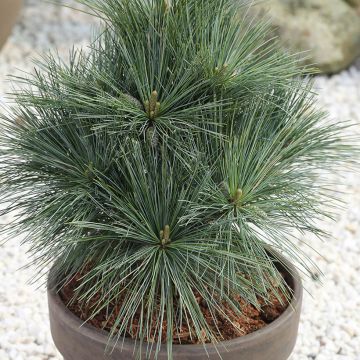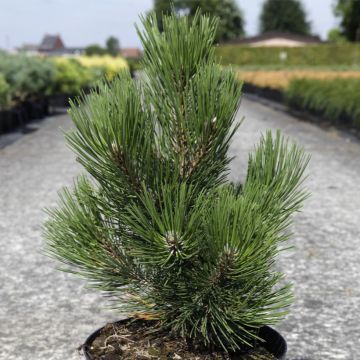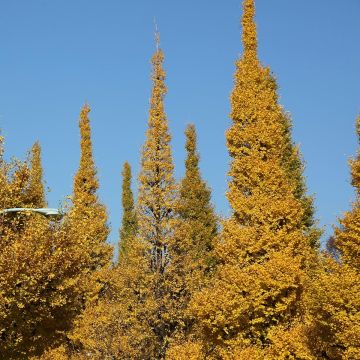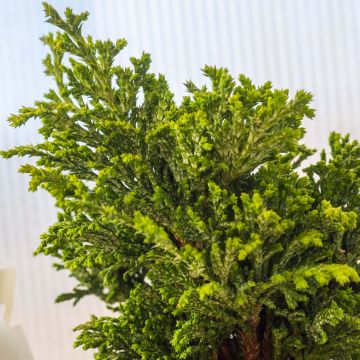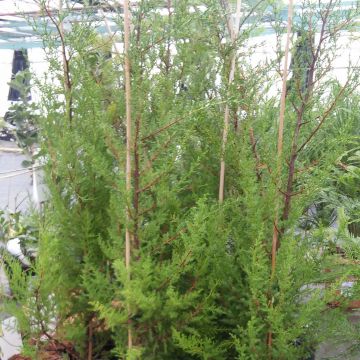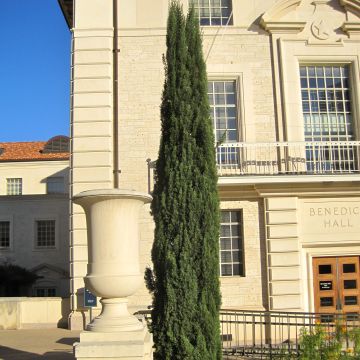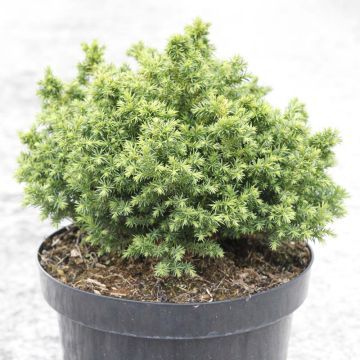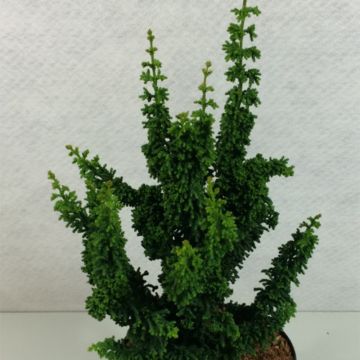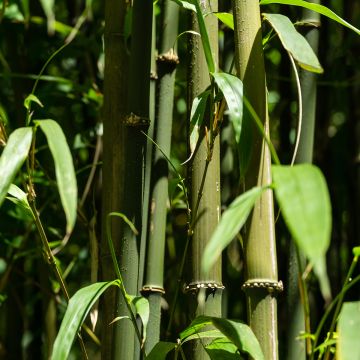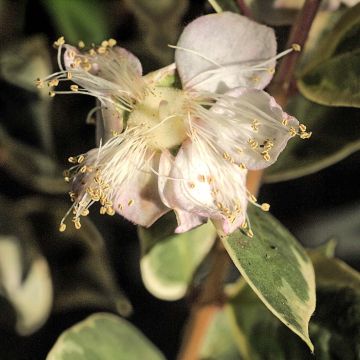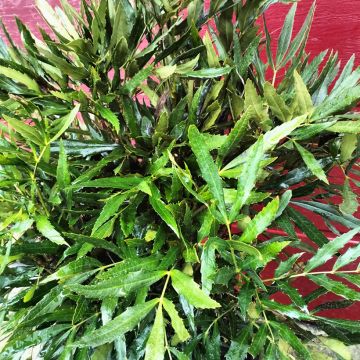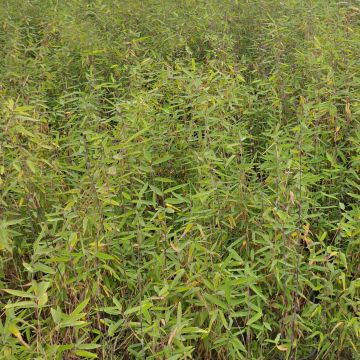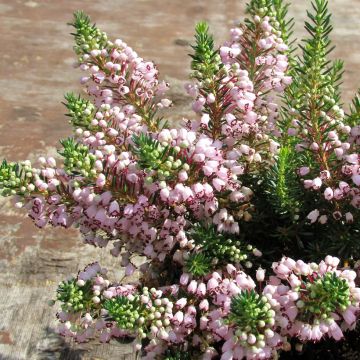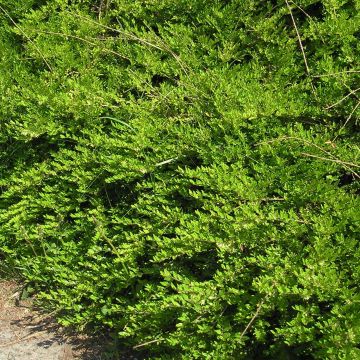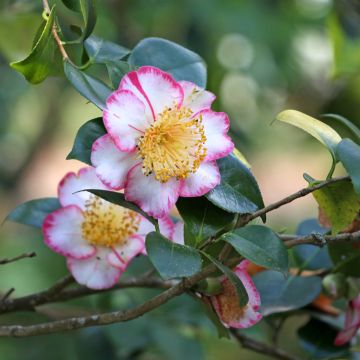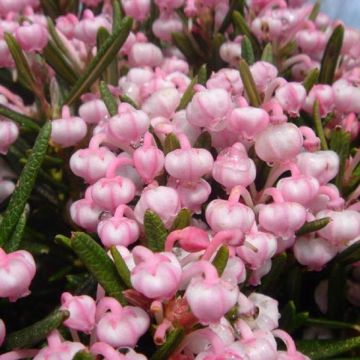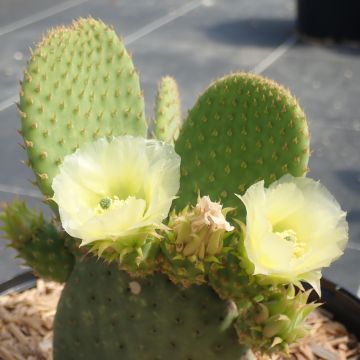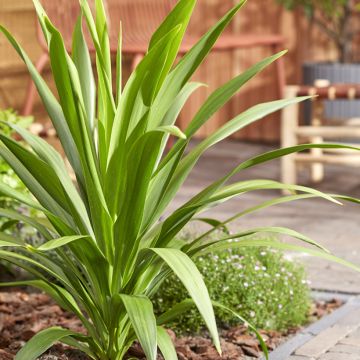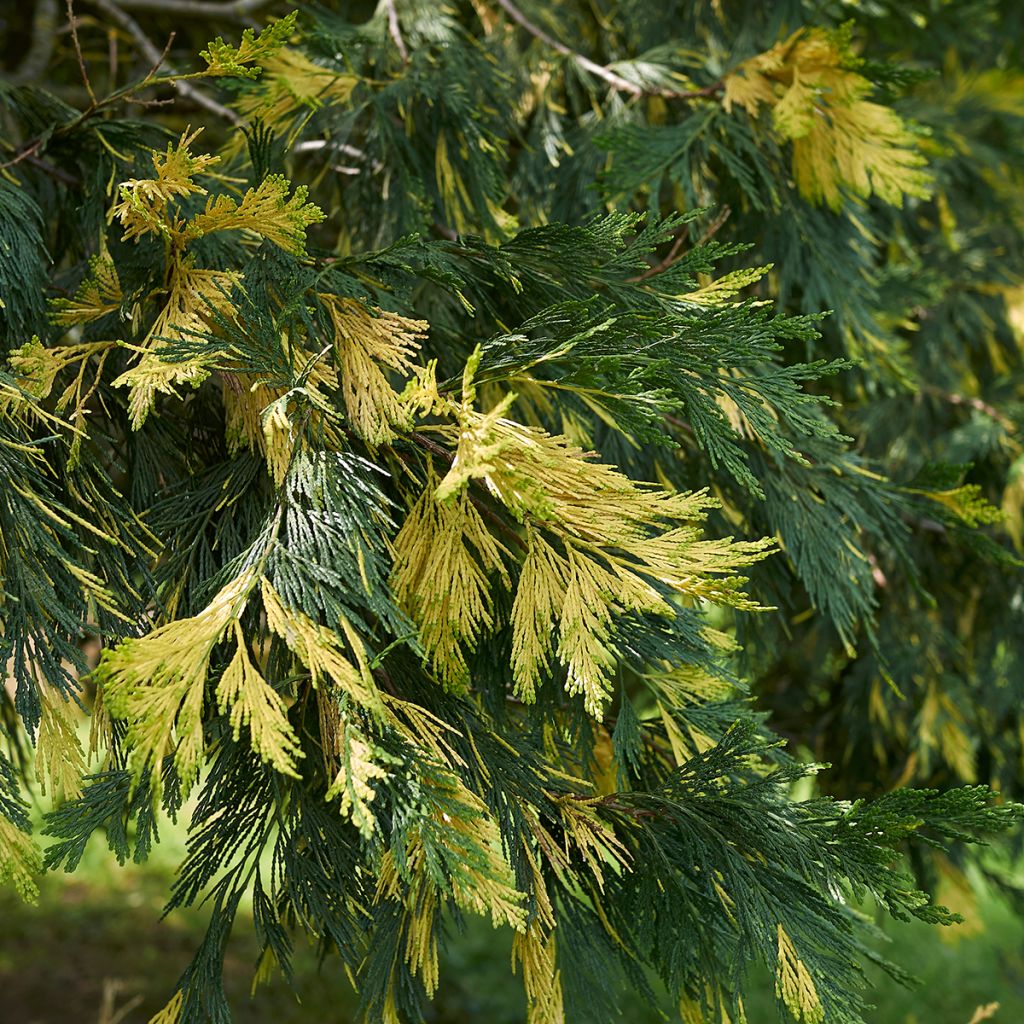

Calocedrus decurrens Aureovariegata - California incense cedar
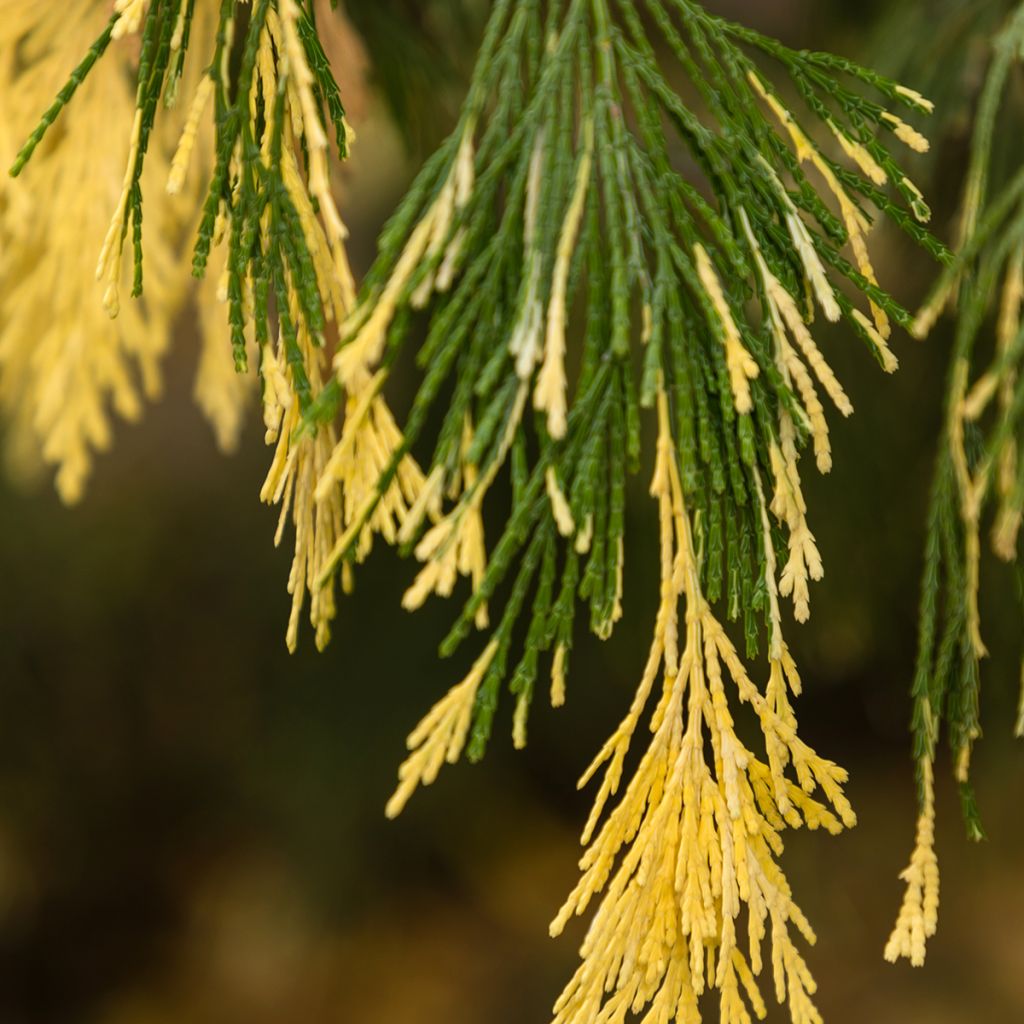

Calocedrus decurrens Aureovariegata - California incense cedar
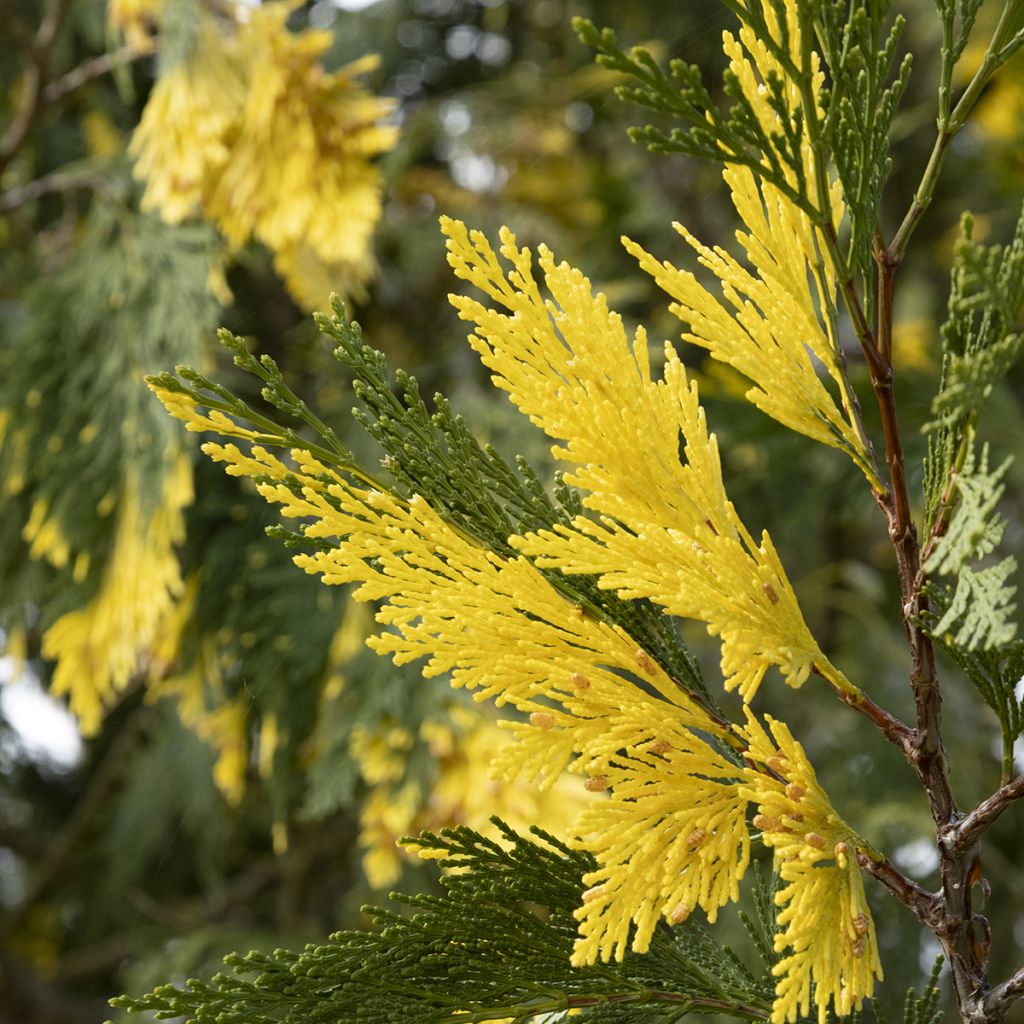

Calocedrus decurrens Aureovariegata - California incense cedar
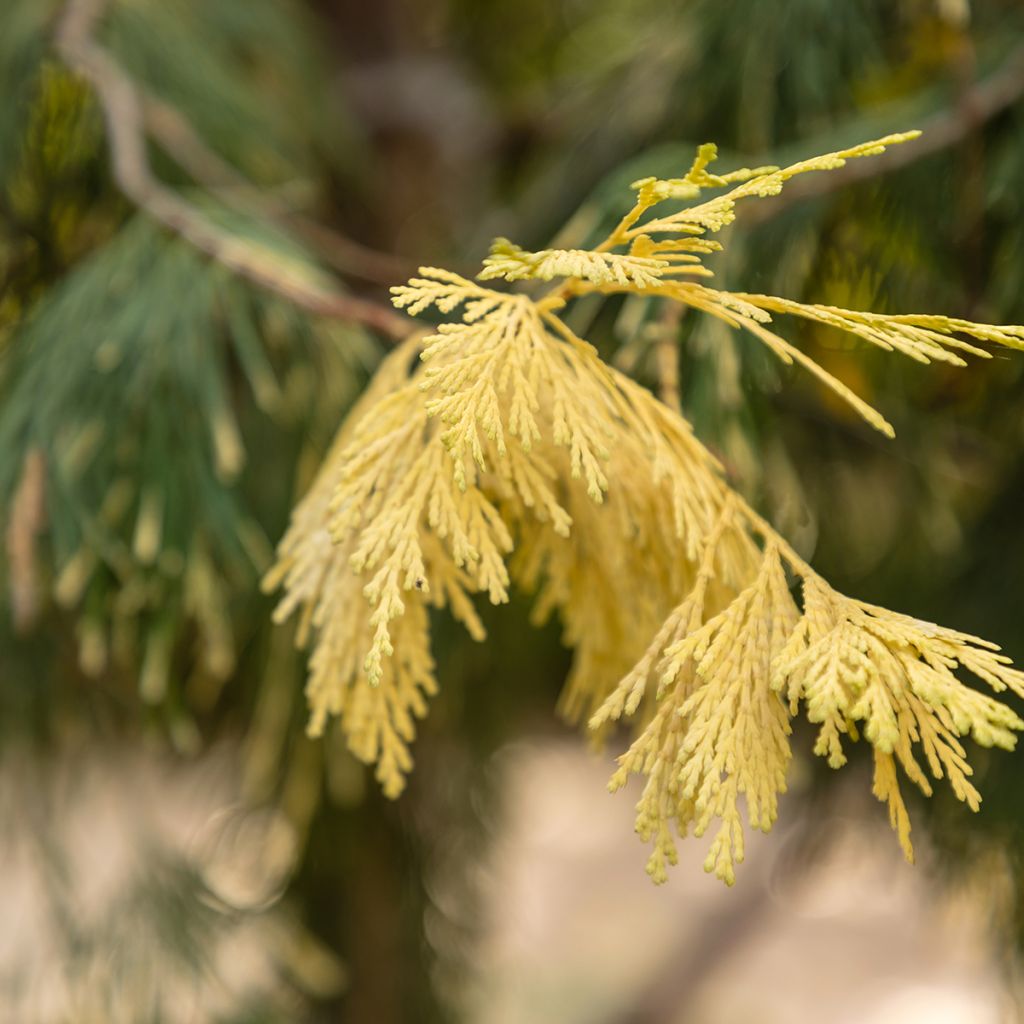

Calocedrus decurrens Aureovariegata - California incense cedar
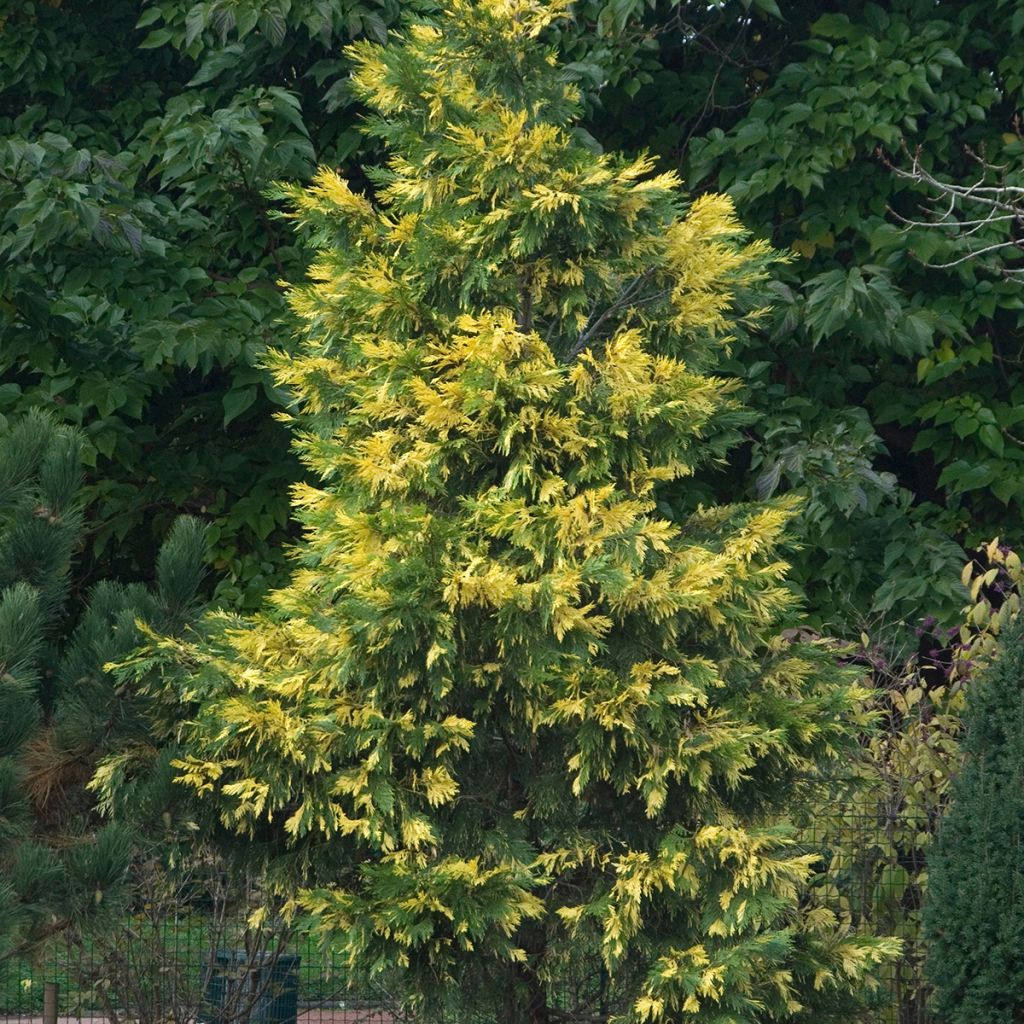

Calocedrus decurrens Aureovariegata - California incense cedar
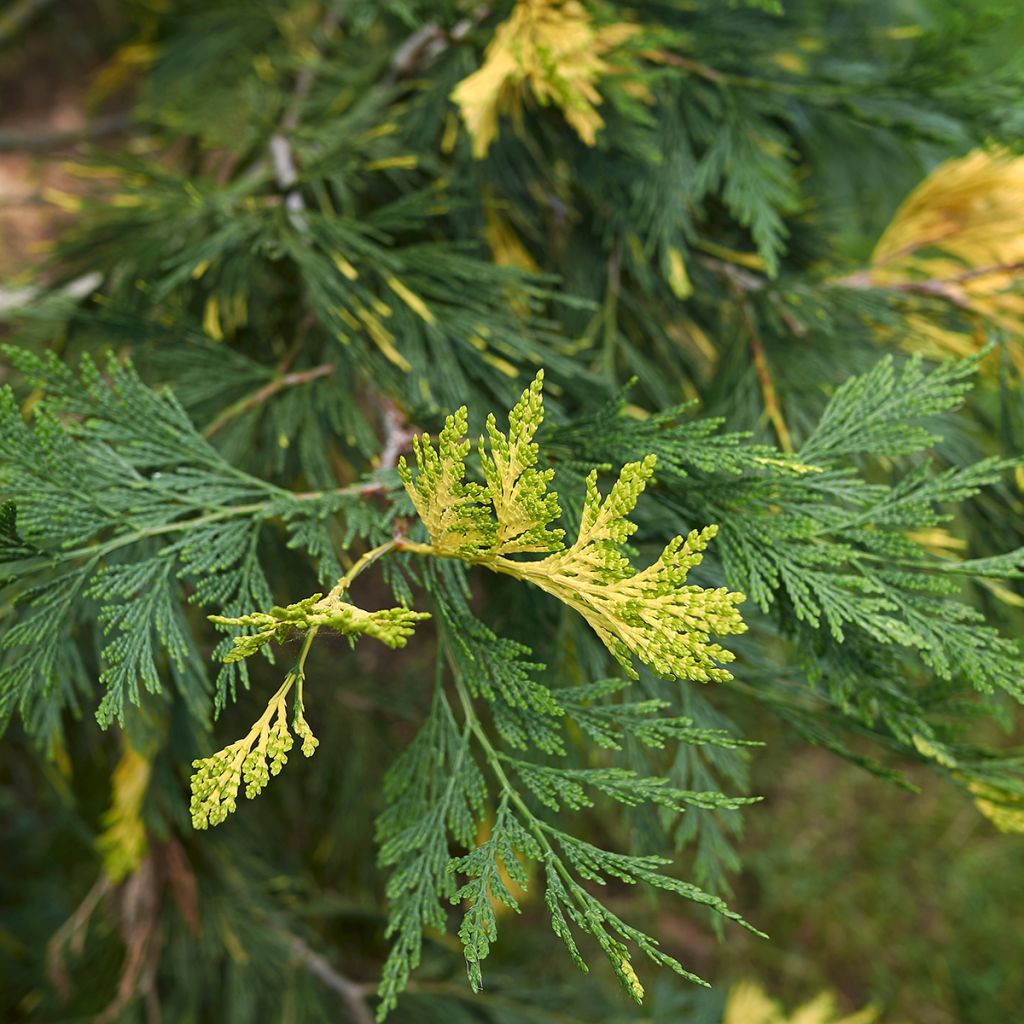

Calocedrus decurrens Aureovariegata - California incense cedar
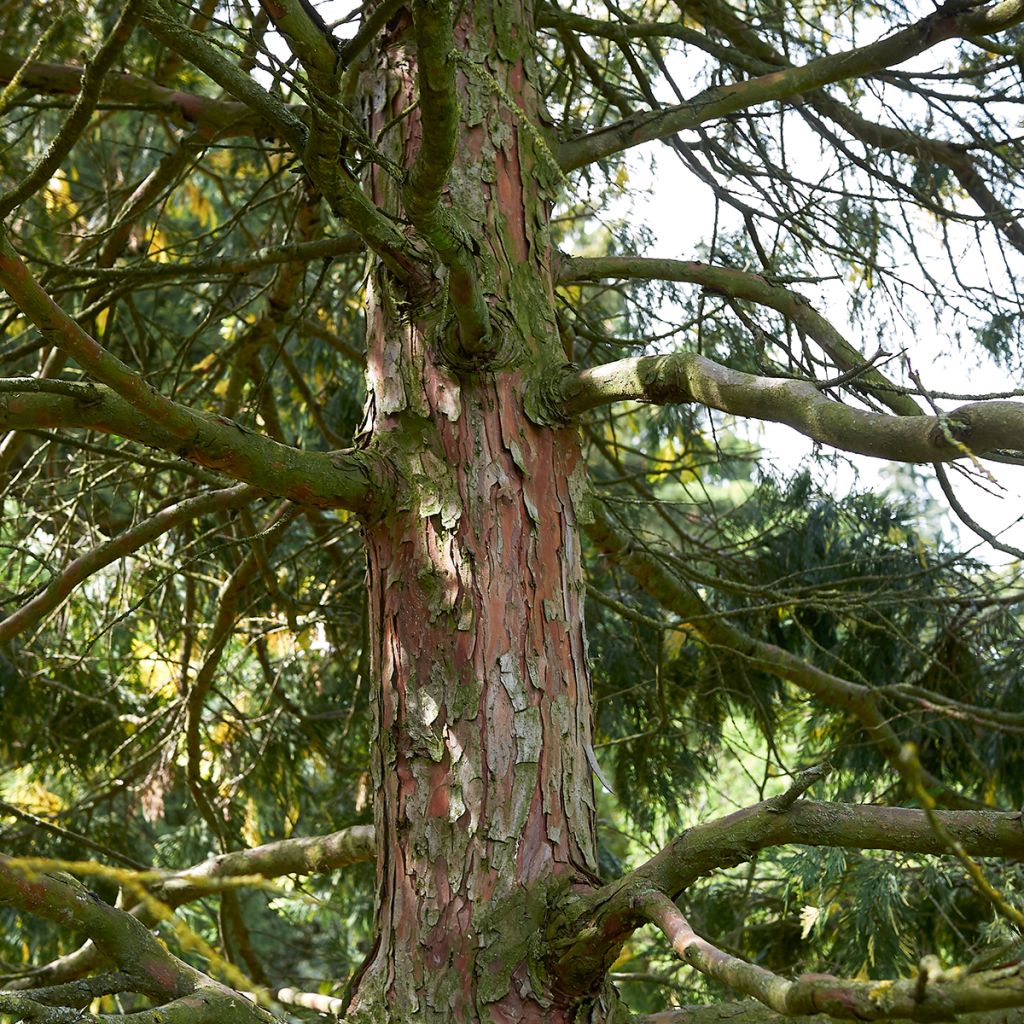

Calocedrus decurrens Aureovariegata - California incense cedar
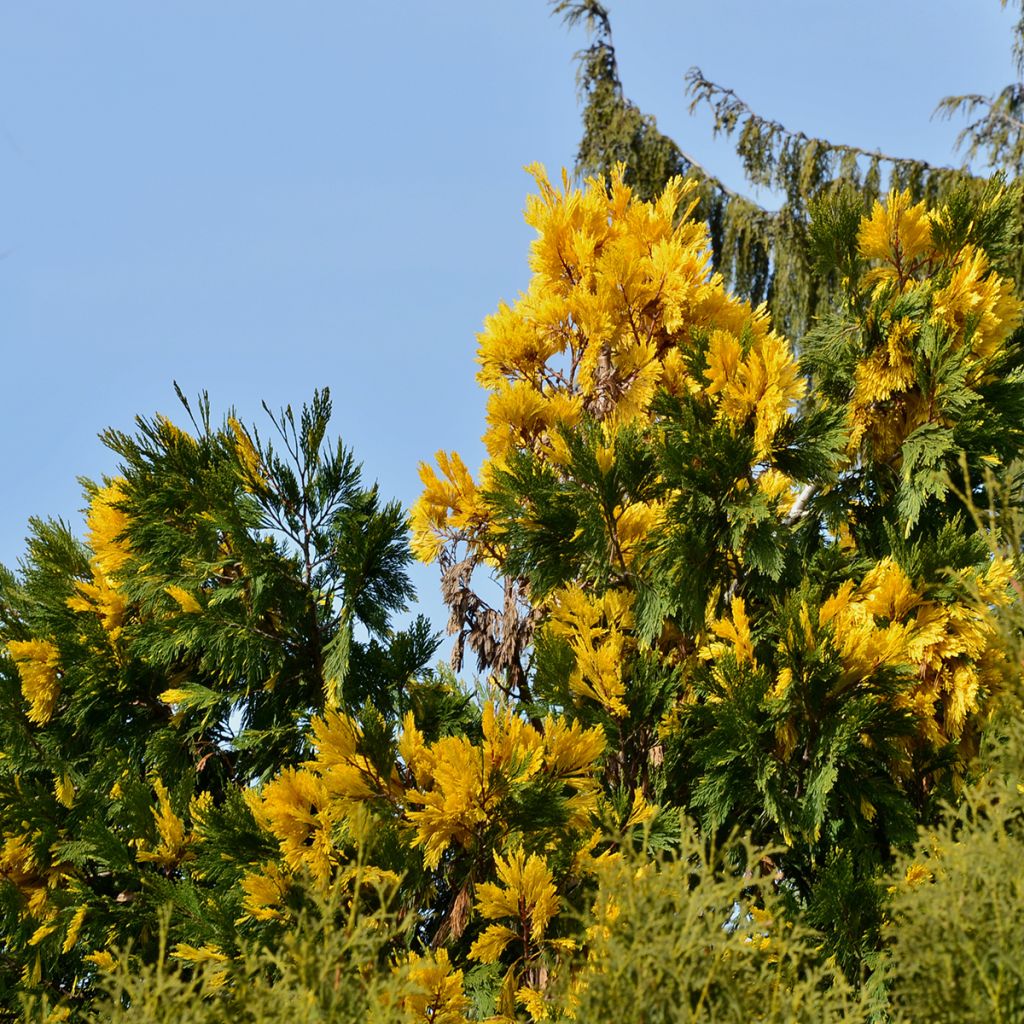

Calocedrus decurrens Aureovariegata - California incense cedar
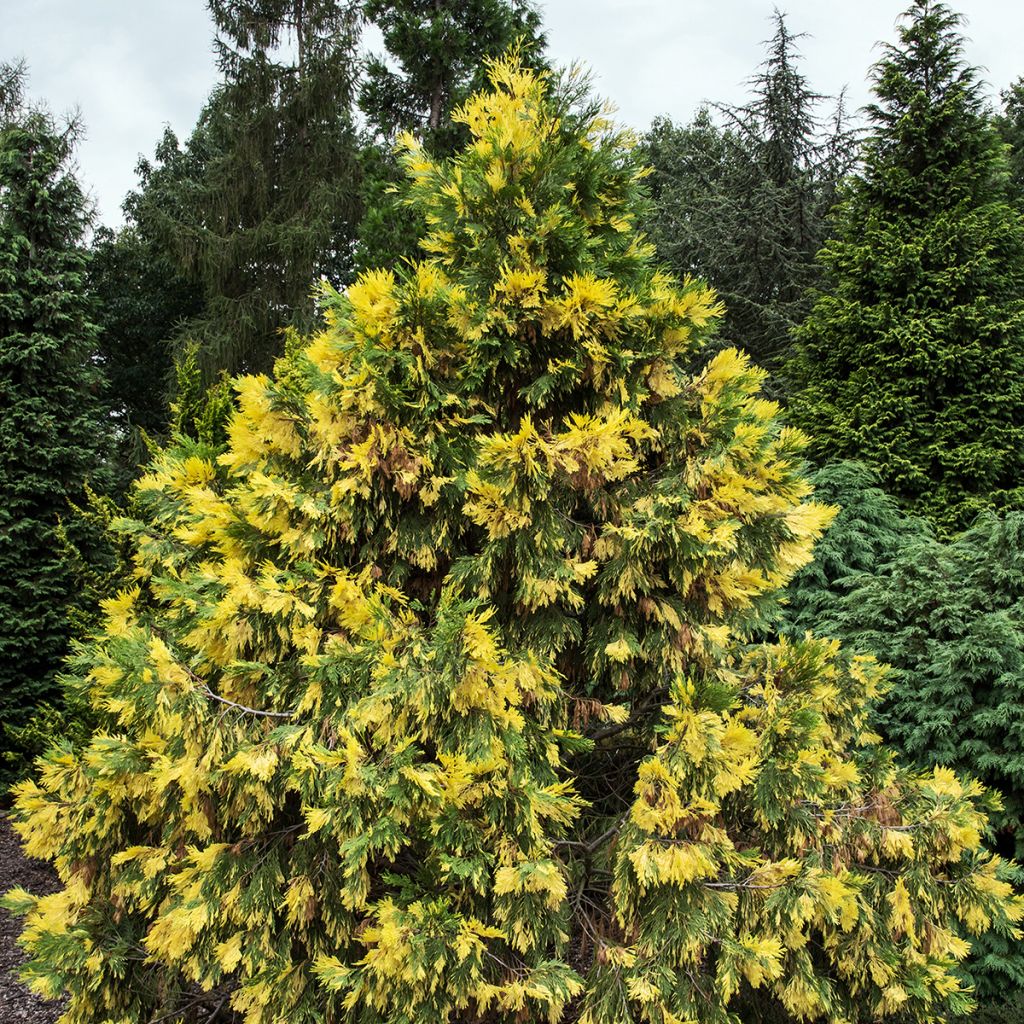

Calocedrus decurrens Aureovariegata - California incense cedar
Calocedrus decurrens Aureovariegata - California incense cedar
Calocedrus decurrens Aureovariegata
Incense cedar, California incense cedar
This item cannot be shipped to the selected country
Oversize package delivery charge from €6.90
More information
Schedule delivery date,
and select date in basket
This plant carries a 24 months recovery warranty
More information
We guarantee the quality of our plants for a full growing cycle, and will replace at our expense any plant that fails to recover under normal climatic and planting conditions.
Oversize package: home delivery by special carrier from €6.90 per order..
Express home delivery from €8.90.
Does this plant fit my garden?
Set up your Plantfit profile →
Description
The Calocedrus decurrens 'Aureovariegata' is a variety of Calocedrus or California White Cedar with very bright variegated foliage. Shimmering, it displays dark green leaves irregularly and generously streaked with yellow. It is a large conifer that resembles the thuja in its foliage or the Italian cypress, as its habit is columnar. Its bark is reddish-brown. It is hardy down to -15 to -17°C. It grows in full sun, in moderately dry, ordinary, and well-drained soil, but appreciates deep and moist soils.
The Calocedrus, also known as incense cedar, belongs to the Cupressaceae family. Mainly native to North America and Asia, it forms a majestic tree that reaches a height of 15 to 40 m at maturity, with an upright trunk and spreading branches. It is appreciated for its ornamental habit, interesting cultivars, aromatic foliage when crushed, and its wood used for pencil-making. Calocedrus species are characterised by their slender silhouette and pyramidal crown. The foliage is evergreen, with scale-shaped leaves arranged in opposite pairs along the branches. Calocedrus cones are round to oval in shape. They mature in one or two years, changing from green to brown. They often persist, adding a touch of colour to the tree.
The Calocedrus decurrens stands out with its flattened branchlets. The leaves in opposite pairs measure from 6 to 12 mm long. The pendant branches produce upright, ovoid, yellow-brown, then brown, female cones, measuring 2 to 2.5 cm. 'Aureovariegata' is a cultivar with irregularly variegated yellow foliage. It develops a narrow and columnar to pyramidal habit. It reaches a height of 15 to 20 m at maturity, with a width of 4 to 5 m. In its youth, it grows slowly, but then gains vigor.
The Calocedrus decurrens 'Aureovariegata' prefers sunny locations and well-drained soils. It is suitable for solitary planting in large gardens or parks. Its habit reminiscent of the Italian cypress gives it presence and distinction, and its colourful and variegated foliage attracts attention and brings a lot of light. Its hues are more pronounced in winter. Its uniqueness also lies in its flattened foliage, very atypical for a conifer. It is resistant to diseases and pests.
Report an error about the product description
Plant habit
Foliage
Botanical data
Calocedrus
decurrens
Aureovariegata
Cupressaceae
Incense cedar, California incense cedar
Cultivar or hybrid
Other Conifers
Planting and care
The Calocedrus decurrens Aureovariegata is ideally planted in autumn, in October or November, in ordinary to fertile and deep soil, well-drained and neutral. Choose a sunny spot. Soak the rootballs well before planting. Add soil improver at planting and water generously in the first few years. Apply a special conifer fertiliser every year in April and weed the soil in summer. It does not require pruning.
Planting period
Intended location
Care
This item has not been reviewed yet - be the first to leave a review about it.
Evergreen shrubs
Haven't found what you were looking for?
Hardiness is the lowest winter temperature a plant can endure without suffering serious damage or even dying. However, hardiness is affected by location (a sheltered area, such as a patio), protection (winter cover) and soil type (hardiness is improved by well-drained soil).

Photo Sharing Terms & Conditions
In order to encourage gardeners to interact and share their experiences, Promesse de fleurs offers various media enabling content to be uploaded onto its Site - in particular via the ‘Photo sharing’ module.
The User agrees to refrain from:
- Posting any content that is illegal, prejudicial, insulting, racist, inciteful to hatred, revisionist, contrary to public decency, that infringes on privacy or on the privacy rights of third parties, in particular the publicity rights of persons and goods, intellectual property rights, or the right to privacy.
- Submitting content on behalf of a third party;
- Impersonate the identity of a third party and/or publish any personal information about a third party;
In general, the User undertakes to refrain from any unethical behaviour.
All Content (in particular text, comments, files, images, photos, videos, creative works, etc.), which may be subject to property or intellectual property rights, image or other private rights, shall remain the property of the User, subject to the limited rights granted by the terms of the licence granted by Promesse de fleurs as stated below. Users are at liberty to publish or not to publish such Content on the Site, notably via the ‘Photo Sharing’ facility, and accept that this Content shall be made public and freely accessible, notably on the Internet.
Users further acknowledge, undertake to have ,and guarantee that they hold all necessary rights and permissions to publish such material on the Site, in particular with regard to the legislation in force pertaining to any privacy, property, intellectual property, image, or contractual rights, or rights of any other nature. By publishing such Content on the Site, Users acknowledge accepting full liability as publishers of the Content within the meaning of the law, and grant Promesse de fleurs, free of charge, an inclusive, worldwide licence for the said Content for the entire duration of its publication, including all reproduction, representation, up/downloading, displaying, performing, transmission, and storage rights.
Users also grant permission for their name to be linked to the Content and accept that this link may not always be made available.
By engaging in posting material, Users consent to their Content becoming automatically accessible on the Internet, in particular on other sites and/or blogs and/or web pages of the Promesse de fleurs site, including in particular social pages and the Promesse de fleurs catalogue.
Users may secure the removal of entrusted content free of charge by issuing a simple request via our contact form.
The flowering period indicated on our website applies to countries and regions located in USDA zone 8 (France, the United Kingdom, Ireland, the Netherlands, etc.)
It will vary according to where you live:
- In zones 9 to 10 (Italy, Spain, Greece, etc.), flowering will occur about 2 to 4 weeks earlier.
- In zones 6 to 7 (Germany, Poland, Slovenia, and lower mountainous regions), flowering will be delayed by 2 to 3 weeks.
- In zone 5 (Central Europe, Scandinavia), blooming will be delayed by 3 to 5 weeks.
In temperate climates, pruning of spring-flowering shrubs (forsythia, spireas, etc.) should be done just after flowering.
Pruning of summer-flowering shrubs (Indian Lilac, Perovskia, etc.) can be done in winter or spring.
In cold regions as well as with frost-sensitive plants, avoid pruning too early when severe frosts may still occur.
The planting period indicated on our website applies to countries and regions located in USDA zone 8 (France, United Kingdom, Ireland, Netherlands).
It will vary according to where you live:
- In Mediterranean zones (Marseille, Madrid, Milan, etc.), autumn and winter are the best planting periods.
- In continental zones (Strasbourg, Munich, Vienna, etc.), delay planting by 2 to 3 weeks in spring and bring it forward by 2 to 4 weeks in autumn.
- In mountainous regions (the Alps, Pyrenees, Carpathians, etc.), it is best to plant in late spring (May-June) or late summer (August-September).
The harvesting period indicated on our website applies to countries and regions in USDA zone 8 (France, England, Ireland, the Netherlands).
In colder areas (Scandinavia, Poland, Austria...) fruit and vegetable harvests are likely to be delayed by 3-4 weeks.
In warmer areas (Italy, Spain, Greece, etc.), harvesting will probably take place earlier, depending on weather conditions.
The sowing periods indicated on our website apply to countries and regions within USDA Zone 8 (France, UK, Ireland, Netherlands).
In colder areas (Scandinavia, Poland, Austria...), delay any outdoor sowing by 3-4 weeks, or sow under glass.
In warmer climes (Italy, Spain, Greece, etc.), bring outdoor sowing forward by a few weeks.

































